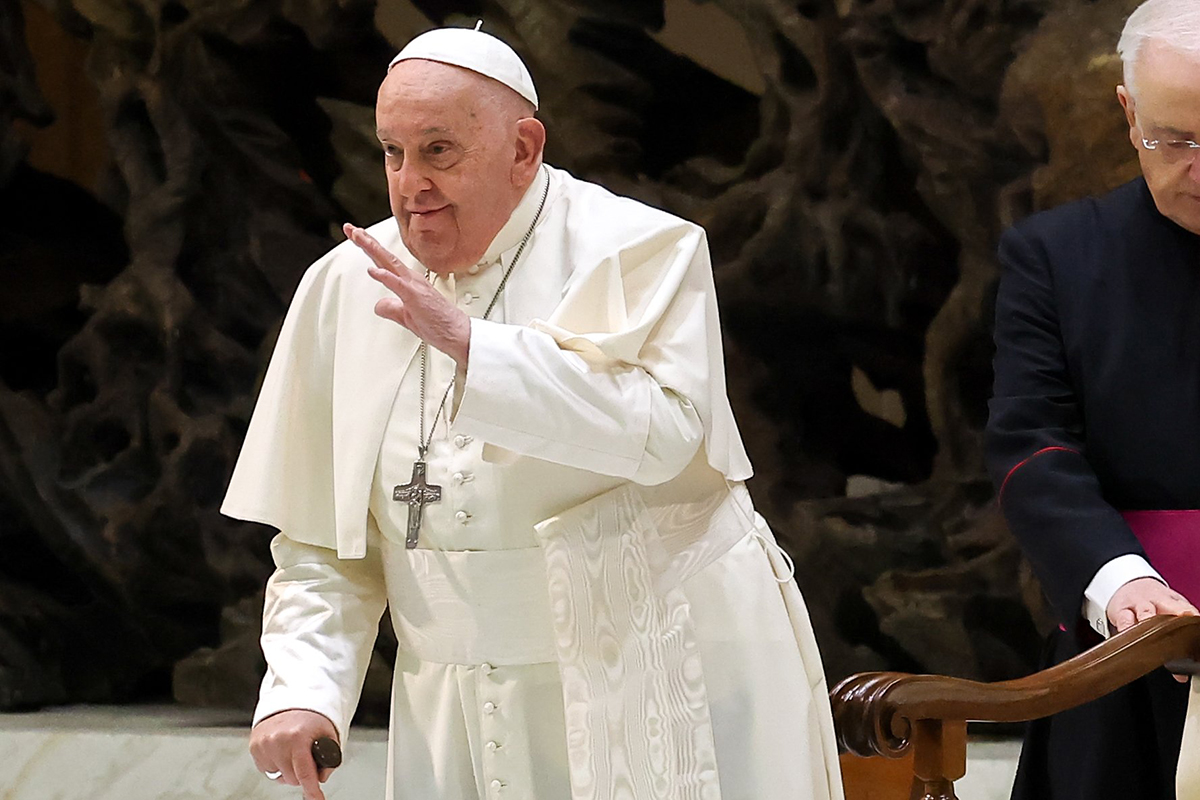SERVE THE LORD WITH GLADNESS | The Cross is glorious because it manifests God’s goodness
Knowing God wins a mighty victory through the Cross can help us embrace our own crosses

Dear brothers and sisters in Christ,
We celebrate the feast of the Triumph (or Exaltation) of the Holy Cross on Sept. 14, followed immediately by the feast of Our Lady of Sorrows on Sept. 15. I’d like to ponder the Cross as a paradoxical revelation of power.
The Gospel of John is divided into two major sections: the Book of Signs (chapters 1-12) and the Book of Glory (chapters 13-20). At the heart of the Book of Glory is actually the Cross! That’s why, as soon as Judas leaves to betray Jesus, Jesus says: “Now is the Son of Man glorified, and God is glorified in Him.” (John 13:31) The whole movement of the Gospel is to the Cross, and through the Cross. How can that be glorious?
St. Thomas Aquinas provides some help when he defines glory as “the manifestation of God’s goodness.” His definition helps us resolve our conundrum: the Cross is glorious because it perfectly manifests God’s goodness. That can help us understand why Christ still bears the wounds of the Cross in His glorified body: they continue to be a manifestation of God’s goodness in Him.
But if this is what victory looks like, then we’re badly in need of conversion. Sports and movies have filled our imaginations with a different sense of victory. Don’t get me wrong — I would love to see the Cardinals win the World Series! But if we build our Christian imagination on a worldly notion of victory, we build our house on sand, because that’s not how the spiritual world works. When we build our Christian imagination on the triumph of the Cross, we build our house on solid rock, because we build on Christ.
That doesn’t make things easy! That’s why it’s important that the Triumph of the Cross is followed immediately by Our Lady of Sorrows. The Cross is truly a victory, but that doesn’t erase any of the hurt — just as the resurrection doesn’t erase the nail marks in Jesus’ body.
Something important happens when, like Mary, we stand at the foot of the Cross and let all its pain into our hearts. Remember, when Mary stands at the foot of the Cross, Jesus calls her “Woman.” Reading that superficially we might think: “How rude!” or at least “How distant!”
But we need to grasp this key: In John’s Gospel, everyone called by a title rather than by their name is not only an individual but also a symbol. In this case, Jesus calls Mary by the same term as Eve in the book of Genesis. That means that Mary becomes the “mother of all the living from this place of sorrow.” From here — from this place of hurt — she bears fruit as a spiritual mother. Standing at the foot of the Cross is, for her, a kind of triumph and victory as well.
The world today is filled with pain. And, so often, we turn away from the pain — because it looks like the opposite of victory, triumph and glory. What if we allowed these two feast days to reshape our imagination? We might learn to embrace our own crosses, knowing that God was winning a mighty victory through them. And we might learn to stand with others at the foot of their crosses, and bear fruit like Mary. We might show the world that there’s another way to deal with pain.





